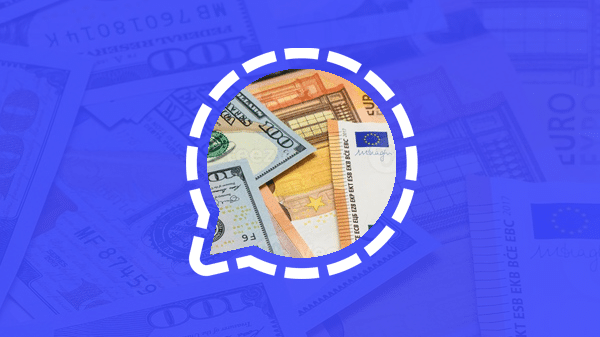Signal is free for users, but not for Signal itself. Developing, maintaining, and operating Signal costs tens of millions of dollars each year. What is this money needed for?
Signal is not focused on making a profit
First of all, it’s important to know that Signal is a non-profit organization. This means Signal is not focused on making a profit but is created solely for you, the users. There are no investors or board members demanding profits, allowing Signal to fully focus on privacy. Revenue models from other apps such as personalized ads and collecting, using, and selling user data always come at the expense of user privacy. Signal’s main source of income is donations from users.
Signal costs tens of millions of dollars per year
Developing, maintaining, and operating Signal costs tens of millions of dollars per year. From 2025, Signal expects this amount to rise to as much as 50 million dollars annually. In a detailed blog post, Signal explains where this money goes.
Infrastructure costs 14 million dollars per year
To allow you to use Signal, infrastructure is obviously required. This includes temporarily storing end-to-end encrypted data for message delivery, a global network of servers, registration costs for verification codes, bandwidth, and some additional services.
The costs are as follows (situation as of November 2023):
Storage: 1.3 million dollars per year.
Servers: 2.9 million dollars per year.
Registration costs: 6.0 million dollars per year.
Total bandwidth: 2.8 million dollars per year.
Additional services: 700,000 dollars per year.
Additional services include things like monitoring uptime, outage alerts, emergency capacity, and maintenance contracts.
Personnel costs are 19 million dollars per year
Signal obviously cannot exist without staff. Signal has separate teams for each platform (Android, iOS, and Desktop) continuously working to keep Signal running. This includes system updates, developing new features, and ensuring the app works on a wide variety of devices.
There is also a team of developers working on the Signal server and libraries like RingRTC and libsignal. Many of Signal’s developers are highly qualified specialists with unrivalled experience and expertise in encryption, security and high availability apps.
In addition, product and design teams determine the app’s functions and appearance. A localization team ensures the app is available in more than sixty languages.
Finally, there is a full-time support team that interacts with users. Since Signal has no analytics in the app and collects no other user data, it relies heavily on this feedback.
Currently, there are about 50 full-time employees, which is very small compared to other apps. For example, Line in Japan has 3,100 employees, and KakaoTalk has 4,000. Larger companies like Apple, Meta (WhatsApp), and Google have many more employees.
About half of Signal’s total budget goes to recruiting and retaining staff. Including salaries, benefits, HR services, recruitment, and taxes, this totals around 19 million dollars per year.
Research and development costs
Research and development costs are the final category. This includes expensive but essential research to improve privacy technology, such as the recent post-quantum upgrade for the Signal Protocol.
Support Signal and donate
All in all, Signal incurs substantial costs, and some of those costs grow with every new user. However, Signal is designed to protect your privacy and does not have a business model that tracks your behavior or commercializes your private conversations to cover these costs.
Instead, Signal aims to prove that apps can truly be made solely for users—not for investors, data hunger, or profit.
Want to contribute? Donate to Signal. You can do this via the app under Signal Settings > Donate to Signal or visit Signal’s website.




